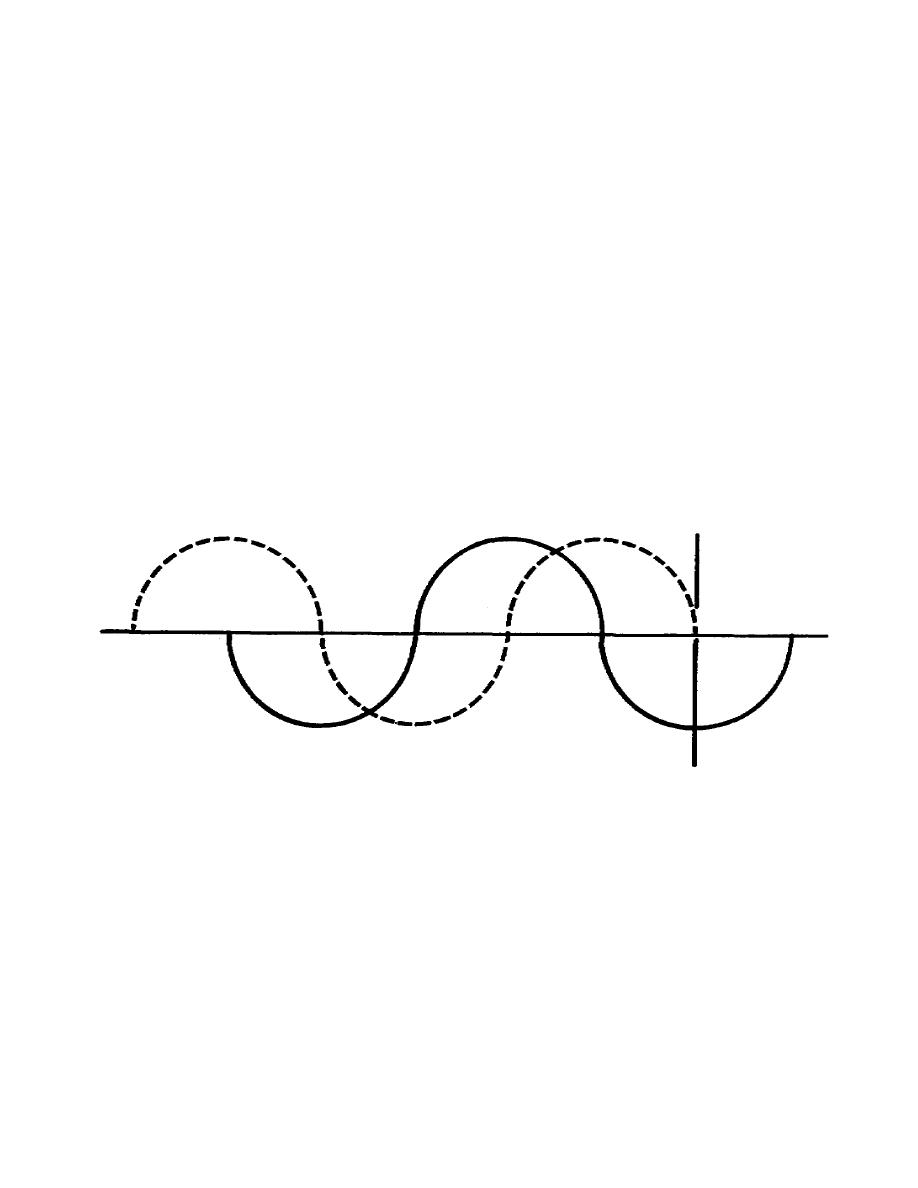
2.
Phase Relatively of Sound. The relationship of the position of two identical complex
waveforms, at any given time, is phase relationship. Phase relationships break down into five areas:
resonance, interference, beat frequencies, echo, and reverberation.
a. Resonance. Resonance occurs when two like waves unite to reinforce or aid each other.
This occurs when compressions from the sources and rarefactions occur at the same instant in time, with
respect to each other. Resonance causes a larger volume of air to move; therefore, a louder sound. For
example:
(1) People phase stereo speakers to get full volume. Both speakers push or pull (compress or
rarefy) air at the same time.
(2) Rear and front speakers in a car face each other. For full volume the rear speaker pushes
while the front speaker pulls. Both speakers are said to be "in phase", with each other.
b. Interference. In interference, there is no complete union of waves because the compressions
and rarefactions occur at different times (fig 1-17). They are occurring off from each other, causing
interference. It is said that these sound waves are "out of phase." The effect of interference is a smaller
volume of air moving, hence a loss of overall volume of sound. Sound waves "out of phase" 180,
result in complete cancellation of sound (fig 1-18).
Figure 1-17. Sound waves partially "out of phase"
11




 Previous Page
Previous Page
